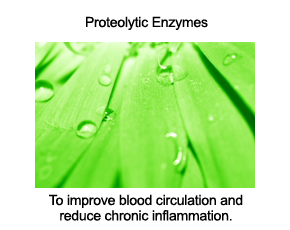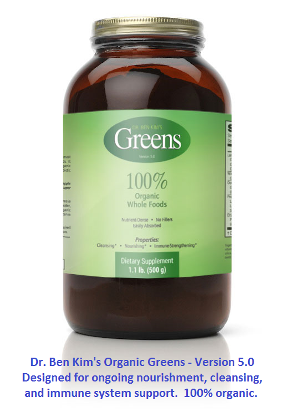You are here
Healthy Foods that Contain Iron
Iron is an essential component of hundreds of enzymes and proteins in your body.
As it is with other trace minerals, a little iron goes a long way. More specifically, your body needs about 1/2 to 1 teaspoon of iron at any given time to carry out its everyday metabolic activities. Without this 1/2 to 1 teaspoon of iron in your body on a consistent basis, you could experience significant health challenges.
What Does Iron Do In Your Body?
- As a part of the compound heme, iron is needed to carry oxygen to your cells and carbon dioxide away from your cells
- Also as a part of the compound heme, iron contributes to the structure of a protein called myoglobin, which is needed to store and transport oxygen in your muscle cells
- Helps to produce ATP (energy)
- Acts as an antioxidant via specific enzymes (catalase and peroxidases)
- Promotes optimal growth, reproduction, healing, and immune function of all of your cells via an enzyme called ribonucleotide reductase
Put another way, being deficient in iron can cause the following symptoms:
- Fatigue
- Rapid heart rate and/or palpitations
- Unusually rapid breathing upon physical exertion
- Spoon-shaped and/or brittle nails
- Inability to stay warm in cold weather
- Impaired mental and motor development in children
- Cravings for non-food items, the most common of which are clay, dirt, cornstarch, and paint chips
- Frequent colds and infections
The following groups of people have a higher-than-average risk of being iron deficient:
- Rapidly growing infants and children, typically between 6 months and 5 years of age.
- Teenagers going through a growth spurt.
- Teenage girls who experience relatively heavy blood loss during menstruation.
- Pregnant women.
- People who are experiencing significant blood loss, acute or chronic.
- Vegans and vegetarians, especially those who eat a lot of whole grains and legumes without soaking them prior
to preparing them to eat. - People who have gastric bypass surgery.
- People with malabsorption syndromes, such as Celiac or Crohn's disease.
- People who engage in intense exercise on a frequent basis.
There are two different types of iron that you can obtain from food sources: heme iron and nonheme iron.
Heme iron can be obtained mainly from protein found in red meats, white meats, and fish.
Nonheme iron can be obtained from meat, dairy products, plant foods, and iron salts that are sometimes added to various foods.
The following factors can enhance and inhibit the absorption of nonheme iron into your blood:
Factors That Can Enhance Absorption of Nonheme Iron:
- Regular intake of vitamin C
- Intake of red meat, white meat, and fish, which means that these animal foods provide readily absorbed heme iron and enhance the absorption of nonheme iron from various foods into your blood
Factors That Can Inhibit Absorption of Nonheme Iron:
- Regular intake of legumes and grains that contain significant levels of phytic acid (phytic acid can be neutralized by soaking legumes and grains in water for several hours prior to preparing them to eat)
- Soy protein, which can inhibit the absorption of iron through a mechanism that doesn't involve phytic acid
- Polyphenols found in coffee, tea, wine, and some fruits, vegetables, and spices, which can inhibit the absorption of iron (this effect can be mitigated by regular intake of vitamin C)
Though you need both heme and nonheme iron to be optimally healthy, you should know that any excess nonheme iron that enters your digestive tract leaves your body via your stools, whereas excess heme iron (found in animal products) can get stored in your body, where it can generate large quantities of harmful free radicals.
Which healthy foods are reliable sources of iron?
| Whole Food Sources | Serving | Iron (mg) |
| Beef Liver | 3 ounces | 6.17 |
| Spinach | 3 ounces | 3.57 |
| Lima beans | 3 ounces | 3.57 |
| Lentils | 1/2 cup | 3.30 |
| Potato, with skin | 1 medium | 2.75 |
| Navy beans | 3 ounces | 2.36 |
| Organic beef | 3 ounces | 2.31 |
| Organic chicken | 3 ounces | 1.13 |
| California avocado | 1 whole | 0.61 |
Goji berries are another healthy food source of iron. Goji berries have been measured to have more than 15 times more iron than spinach.
Excess intake of iron has been associated with Alzheimer's disease, Parkinson's disease, liver cancer, and an increased risk for cornary artery disease. It is therefore best to get your iron from healthy food sources rather than from synthetic supplements.
Here are the US government's recommended daily allowances for iron:
| Recommended Dietary Allowance (RDA) for Iron | |||
| Life Stage | Age | Males (mg/day) | Females (mg/d) |
| Infants | 0-6 months | 0.27 (Adequate Intake) | 0.27 (Adequate Intake) |
| Infants | 7-12 months | 11 | 11 |
| Children | 1-3 years | 7 | 7 |
| Children | 4-8 years | 10 | 10 |
| Children | 9-13 years | 8 | 8 |
| Adolescents | 14-18 years | 11 | 15 |
| Adults | 19-50 years | 8 | 18 |
| Adults | 51 years and older | 8 | 8 |
| Pregnancy | all ages | - | 27 |
| Breastfeeding | 18 years and younger | - | 10 |
| Breastfeeding | 19 years and older | - | 9 |
If you suspect that you might be deficient in iron, here are some guidelines on how to address your situation:
- Visit your health care provider to rule out blood loss as a potential cause. If your doctor finds that blood loss is not a significant factor for you, she or he may recommend a series of blood tests that can tell you if have iron deficiency anemia. These blood tests include: a complete blood count (CBC), an iron test, a ferritin level test, and a reticulocyte count.
- Adopt good eating habits.
- Consider and address any emotional stressors in your life that may be contributing to an unhealthy digestive tract.
- Regularly eat iron-rich foods.
Go To Nutrient Index
Join more than 80,000 readers worldwide who receive Dr. Ben Kim's free newsletter
Receive simple suggestions to measurably improve your health and mobility, plus alerts on specials and giveaways at our catalogue
Please Rate This
Highest Rated | Related Posts | ||











Comments
Healthy Foods that contain Iron
This article lacks the symptoms of iron overload in the body, and since many of the symptoms are similar to deficeincy, this should be included. I read the post on Vitamin D, and how it is important to the absorption of minerals such as Iron. It would be wonderful for someone to research the correlation, if any, between iron deficiency/overload and vitamin D deficiency since they seem to have many of the same symptoms and health issues associated with them.
In addition, I'm deeply suspect of the fortified iron added to ALL processed foods containing enriched flour and you should include this in your "sources" of non-heme iron.
I find it ironic, that most articles about iron supplementation warn against supplementing iron without the advice of a doctor, yet cereals, such as Special K, can provide 100% of the RDA. This is iron you can collect with a magnet! I cringe thinking about how much iron is ingested by the kids who come home from school and polish off a couple of bowls of cereal and parents thinking it's OK because they're getting their nutrition.
A number of research articles on curcumin, as well as the Vitamin D post on this sight, made me suspect that iron overload, or rather iron absorption inefficiency, may be inter-related. Curcumin, apparently is an efficient iron-chelator as well as an iron regulator, seen as a bad side-effect by those researching it, but on the contrary, may be one of the reasons it demonstrates the anti-inflammatory, anti-oxidant, anti-cancer, anti-sceptic etc. results that have been summarized in the numerous articles on pubmed.
This research needs to be sorted out. It's apparent that there are a number of hereditary factors affecting iron absorption, but it's hard to tell from the research if other nutritional needs required for iron absorption aren't the real culprit for related disease causes/symptoms.
Iron & Vitamin C
Vitamin C increases absorption of Iron when combined together at same time. Too much Iron can cause oxidation in body like a rust and cause illness. Tea can help block Iron absorption and Turmeric I believe helps rid body of excess Iron.
Not enough iron
There are times when I have been turned down to donate blood because of low hemoglobin or lack of iron. Two weeks before donating blood, I decided to take iron pills. Again, my iron was below 12.5. I've just read your comment that too much iron can cause oxidation in body like a rust and cause illness. I've also been informed that if I were taking calcium at the same time - affects or negates the power of iron. Could you please comment on this.
Calcium blocks absorption of iron
I noticed while suffering anemia during pregnancy that calcium blocks the absorption of iron. The best way to avoid this is to NOT take calcium supplements OR milk OR anything dairy / fortified with calcium (e.g. almond milk, soy milk, etc.) at the same as your iron.
So, leave a TWO-HOUR window, both BEFORE and AFTER your iron-containing meal or supplement, with as little calcium as possible. No ice cream after dinner!! Grab some bright fruit!
Also, vitamin C boosts the absorption of iron. So, pair up your iron-rich foods with vitamin C-rich foods. E.g. spaghetti and meatballs with tomato sauce (no cheese). Lentils and spinach with tomatoes. Have an orange after you have your steak and potatoes. The foods pair naturally together, just do a little research. whfoods.com has excellent databases for each nutrient we need, and lists good sources for each one. For iron, it is located here:
http://www.whfoods.com/genpage.php?tname=nutrient&dbid=70
I hope this helps someone, because anemia is very hard to live with!!
iron overload
Thank you for this post. A blood test has recently shown too much iron in my blood. Having taken vitamin supplements for some years, I wonder how permanently this will affect me? When I stopped these supplements the pains in my legs disappeared as did some lethargy. I really think you are correct to highlight this overload of iron because very few people have heard of it and it may be contributory to the rise of Alzheimer's disease. Thank you.